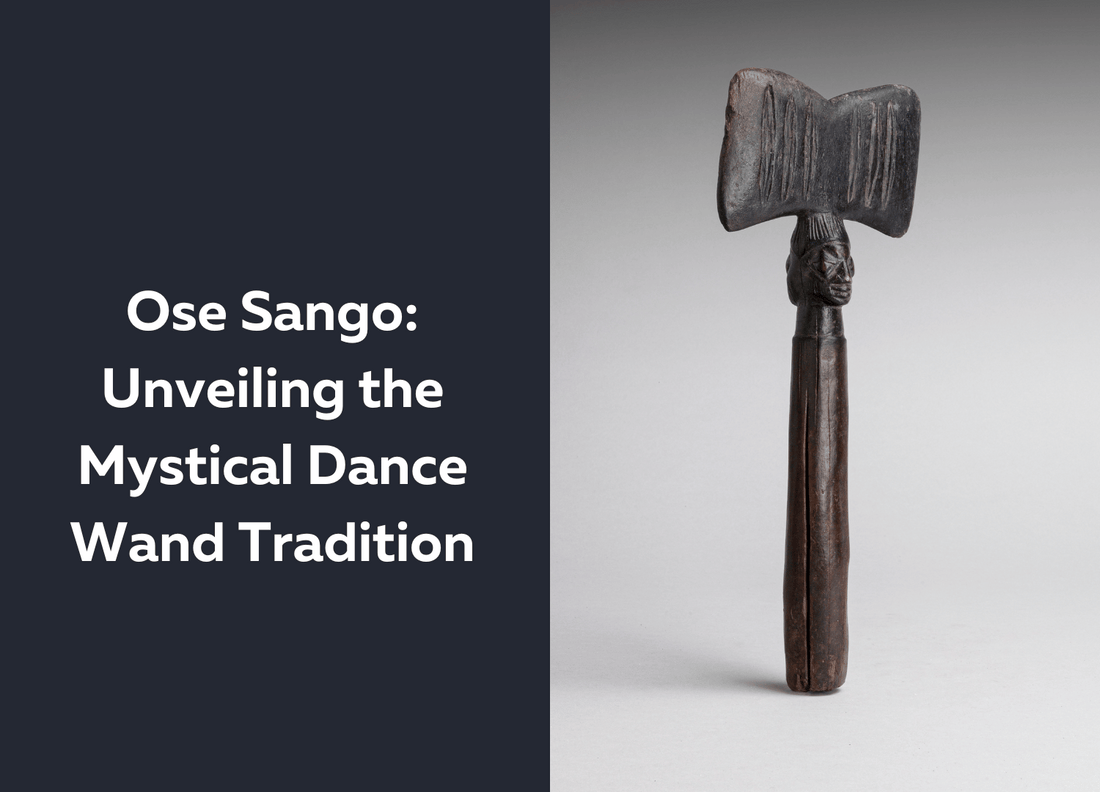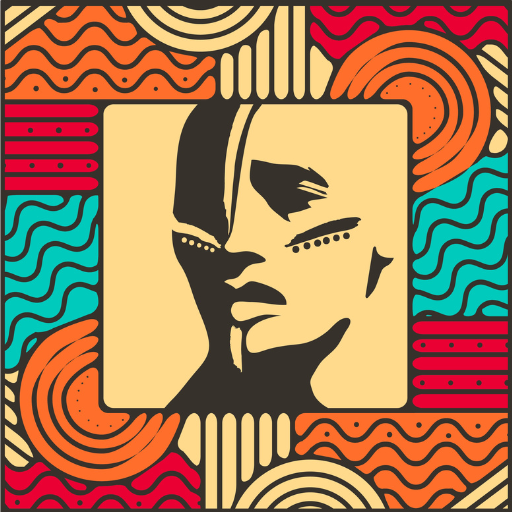
Ose Sango: Unveiling the Mystical Dance Wand Tradition and Its Historical Roots in Yoruba Culture
Introduction:
In the vibrant tapestry of Yoruba culture, where tradition and spirituality are seamlessly interwoven, the Ose Sango stands as a powerful emblem of devotion and reverence. This sacred wooden staff, adorned with a double-headed-axe motif at its summit, holds a profound significance in the worship of Sango, one of the revered deities (Orisa) in the Yoruba cosmos. As we embark on this journey into the heart of Yoruba culture, we will delve deep into the rich history, myths, variations, and symbolic importance of the Ose Sango dance wand.

Historical Roots: Sango - The Warrior King and Deity
To understand the essence of Ose Sango, we must first trace its origins back to the legendary figure of Sango. Before Sango's posthumous elevation to a deity, he reigned as the fourth Alaafin, a royal title for Kings, of the mighty Oyo-Ile, the ancient Oyo Empire. Sango was a complex character, celebrated for his prowess as a fearless warrior and feared for his short temper.
The Mythical Narrative: The Birth of Ose Sango
The myths surrounding Sango's life and death in the eighteenth century shed light on the genesis of Ose Sango within the courts of the Kings of Oyo. It is said that Sango's chiefs, disheartened by his leadership qualities, instigated a revolt against him. This revolt led to Sango's exile and eventual suicide in a town known as Koso.
Devastated by his death and feeling responsible for his exile, Sango's close associates sought to avenge him. They sought the aid of charms from the neighboring Bariba community and invoked thunderstorms to strike down those who had opposed Sango. This cataclysmic event left the empire in ruins, and in its wake, Sango was proclaimed as an Orisa in need of appeasement through sacrifices. A cult of Priests was established as intermediaries, and rituals were conducted at the newly established shrine within the palace courts and at the site of his suicide in Koso.
This transformation from a mortal king to a revered deity led to the legendary proclamation that Sango did not die by suicide but instead became Oba Koso (The King who did not commit suicide). This pivotal moment in Yoruba history laid the foundation for the birth of Ose Sango as an essential component of Sango worship, accessible to devotees seeking to honor the mighty deity.
Variations in Ose Sango: Carved from the Sacred Ayan Tree
Ose Sango staffs are crafted from the sacred Ayan tree, also known as African Satinwood, believed to be inherently linked to Sango's divine essence. These staffs come in various forms, each carrying its unique symbolism and purpose.
One particularly fascinating variation is the Sango staff adorned with the effigy of a kneeling woman, often wearing an intricate hairstyle known as Suku. This form of the staff is specifically designated as a dance wand, used during ritualistic ceremonies and dances that pay homage to Sango's enduring spirit.
In contrast, some Ose Sango staffs take on a boomerang shape, symbolizing the awe-inspiring presence of Oba Koso, a facet of Sango's multifaceted identity, which is often invoked in traditional praise songs and eulogies.
Another distinct variation includes the staffs with effigies wearing skirts, representing Sango as a vengeful deity capable of wielding lightning and thunderbolts to protect his devotees.

Regional Distinctions: A Glimpse into Yoruba Subgroups
It's important to note that the physical appearances of Ose Sango staffs vary across different Yoruba subgroups, adding a layer of cultural diversity and complexity to their significance. Among the Ijesha subgroup in Ekiti State, the effigies on Ose Sango often feature long noses, broad nostrils, and heavy eyelids. In contrast, among the Egbado subgroup in Ogun State, the effigies sport almond-shaped eyes, giving them a distinctive appearance. Lastly, among the Ede subgroup in Osun State, the facial features of the effigies are characterized by sharp and concentrated features, adding yet another dimension to the artistic and cultural tapestry of Ose Sango.
Conclusion: A Living Tradition
In conclusion, the Ose Sango dance wand tradition is more than just a ceremonial artifact; it encapsulates the essence of Yoruba spirituality, history, and reverence for the enigmatic Sango. As we peel back the layers of myth, history, and artistic expression surrounding Ose Sango, we gain a profound insight into the intricate relationship between the Yoruba people, their deities, and their cultural heritage. The Ose Sango invites us to celebrate the beauty and complexity of African culture, preserving its enduring legacy for generations to come. Through the rhythmic dances and sacred rituals, the spirit of Sango lives on, a testament to the enduring power of tradition in the heart of Yoruba culture.



